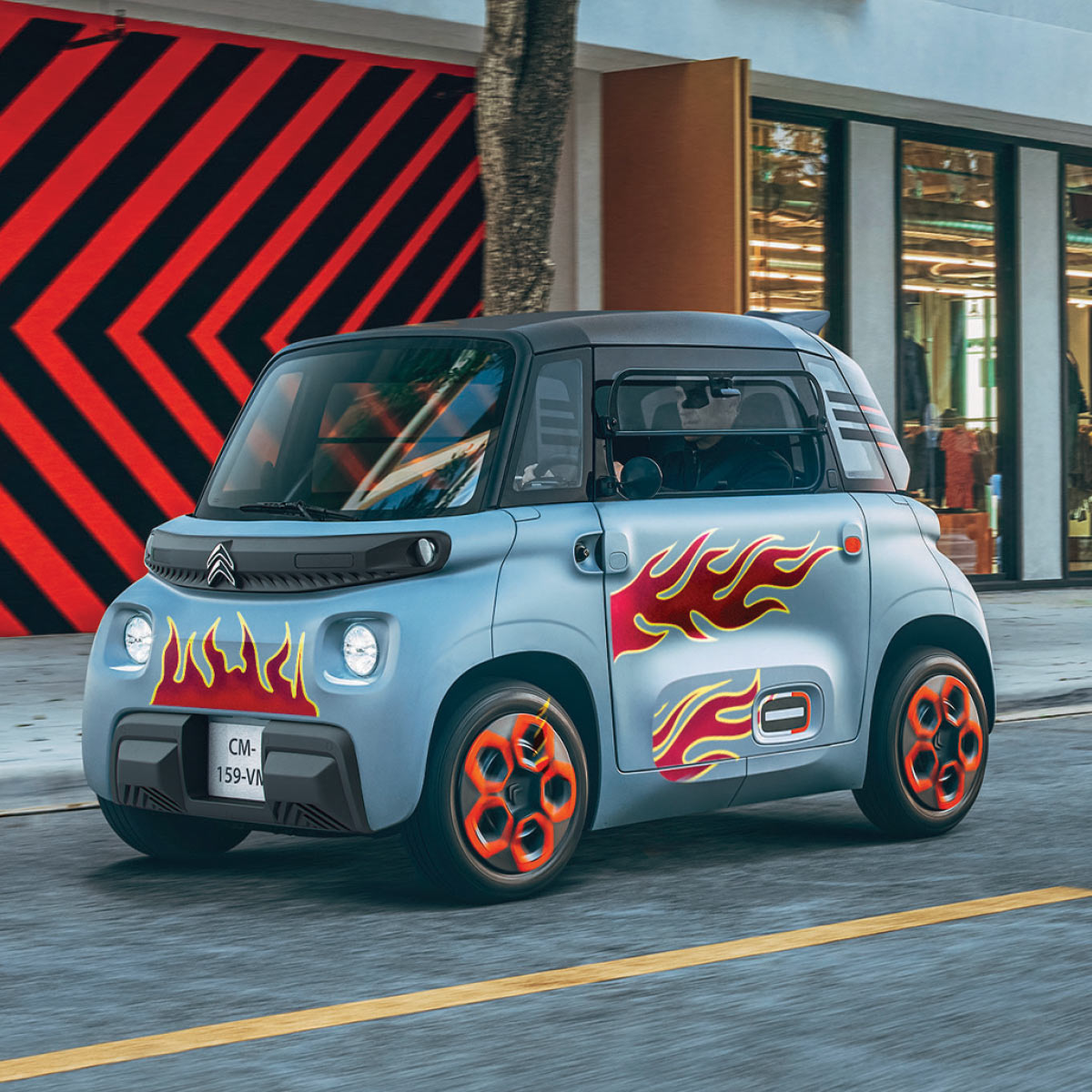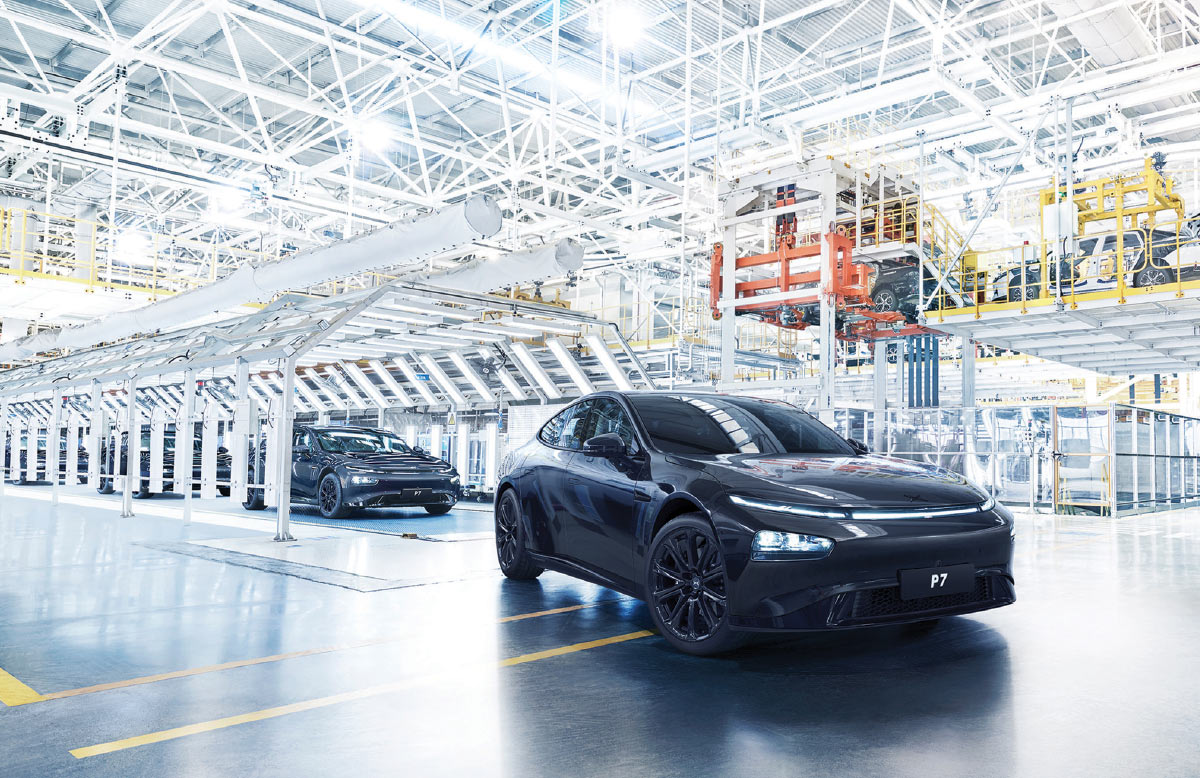
his car could be a major piece of machinery. This car could be systematic, hydromatic, ultramatic. Why, it could be greased lightning!” The hit Broadway show and 1978 film, “Grease” spoke to the love of hot rods as well as lust between high schoolers.
America since the end of World War II really developed into a car culture; it was and is home to the most iconic brands—Ford, GM, Chrysler (now Stellantis). Today, the Germans, Japanese and Koreans all also make cars in the U.S., Canada and Mexico. Even the Chinese EV automaker NIO has opened offices in California.
The electrification of the vehicle, for the sake of the planet, is a disruptor, to be sure. OEMs like Ford, GM and Mercedes-Benz, which have built fossil-fueled internal combustion engine models for roughly a century, are taking on the challenge of producing battery electric vehicles (BEV) on a much greater scale than they have before. This inexorable trend presents challenges for the automotive supply chain, but the risks of not preparing for this evolution are greater than the risks of failing to adapt.

his car could be a major piece of machinery. This car could be systematic, hydromatic, ultramatic. Why, it could be greased lightning!” The hit Broadway show and 1978 film, “Grease” spoke to the love of hot rods as well as lust between high schoolers.
America since the end of World War II really developed into a car culture; it was and is home to the most iconic brands—Ford, GM, Chrysler (now Stellantis). Today, the Germans, Japanese and Koreans all also make cars in the U.S., Canada and Mexico. Even the Chinese EV automaker NIO has opened offices in California.
The electrification of the vehicle, for the sake of the planet, is a disruptor, to be sure. OEMs like Ford, GM and Mercedes-Benz, which have built fossil-fueled internal combustion engine models for roughly a century, are taking on the challenge of producing battery electric vehicles (BEV) on a much greater scale than they have before. This inexorable trend presents challenges for the automotive supply chain, but the risks of not preparing for this evolution are greater than the risks of failing to adapt.
Mercedes-Benz opened a battery plant near Tuscaloosa, Alabama, on March 15, a few months ahead of the start of production of all-electric Mercedes-EQ vehicles in the United States. Mercedes-Benz will produce the EQS SUV and EQE SUV in Alabama as part of a global push to produce all-electric vehicles at seven locations on three continents.
“The opening of our new battery plant in Alabama is a major milestone on our way to going all-electric,” Mercedes-Benz Group Chairman Ola Källenius said in a statement.
The company invested $1 billion into the battery plant, the logistics centers and to upgrade the production line to make EVs.
 our battery plant is a milestone to going all-electric.
our battery plant is a milestone to going all-electric. 
This is “the first of several new investments that will drive the EV revolution in the United States,” Nissan COO Ashwani Gupta stated. The carmaker intends to produce 23 electrified models for the Nissan and Infiniti brands globally, including 15 all-electric vehicles, by 2030.
On March 16, Honda of Canada Mfg. (HCM) pledged to invest $1.38 billion over six years to upgrade its Alliston, Ontario, manufacturing plants. The factories will implement the latest technologies, processes, supply chain, and vehicle research and development programs, as a part of Honda’s goal to reach zero emissions by 2040.
Honda is moving forward with its “ambitious vision to make battery electric vehicles represent 100 percent of our North America vehicle sales by 2040,” stated Jean Marc Leclerc, president and CEO of Honda of Canada.
Staying within Canada, General Motors Co. has partnered with Korea-based POSCO Chemical to build a $400 million facility in Bécancour, Quebec, that will produce cathode active material (CAM) for GM’s Ultium batteries, which will power electric vehicles such as the Chevrolet Silverado EV, GMC Hummer EV and Cadillac Lyriq.
“GM and our supplier partners are creating a more secure and sustainable ecosystem for EVs, built on a foundation of North American resources, technology and manufacturing expertise,” Doug Parks, executive vice president for GM’s Global Product Development, Purchasing and Supply Chain, said March 7. “Canada plays an important role in our all-electric future.”
By the end of 2025, GM plans to have capacity to build 1 million electric vehicles in North America, and the company targets the majority of components by value to be sustainably sourced, processed or manufactured in North America.
The announcement about a new Canadian enterprise follows that of Ultium Cells, GM’s joint venture with LG Energy Solutions, to build a $2.6 billion battery cell manufacturing facility, in Lansing, Michigan, which is scheduled to open in late 2024. The facility will supply battery cells to Orion Assembly in Michigan and other GM EV assembly plants. The Lansing site joins Ultium Cells battery cell manufacturing sites being built in Ohio and Tennessee.

Last September, Ford Motor Co. began construction on its $5.6 billion Blue Oval City, a manufacturing complex in Stanton, Tennessee, that will produce the next generation of electric F-Series trucks and batteries.
Blue Oval City will become a vertically integrated ecosystem with key suppliers, worker education and training facilities, and battery manufacturing and recycling on site. This project “is crucial to the company’s long-term vision to lead America’s transition to electric vehicles and introduce more sustainable, carbon-neutral manufacturing,” Ford stated.
 We have the capacity to be the ev leader by mid-decade.
We have the capacity to be the ev leader by mid-decade. 
BMW Group, Munich, signed an agreement earlier this year with Salzgitter AG for delivery of low-carbon steel. The steel will be used in standard production of cars at the BMW Group’s European plants from 2026 onward. With this move, the BMW Group is expanding its sourcing of low-carbon steel to two suppliers; the company already inked a deal with Swedish startup H2 Green Steel in October 2021.
The aim is to use low-carbon steel to meet over 40 percent of demand at its European plants by 2030, thereby reducing CO2 emissions by up to 400,000 metric tons per year.
This move should help to substantially reduce CO2 emissions at the source in the supplier network, explained Joachim Post, who manages BMW’s purchasing and supplier network. “Our aim is to reduce vehicles’ life cycle carbon footprint with a holistic approach.”
H2 Green Steel will supply BMW’s European plants with steel produced exclusively using hydrogen and green power from 2025 onward. This process will reduce CO2 emissions by around 95 percent.
BMW Group established a closed-loop material cycle system for scrap at its Leipzig location with Salzgitter AG more than five years ago. Up to 25 percent of the steel in BMW Group vehicles already comes from recycled material. BMW plans to increase its percentage of secondary steel in stages, reaching up to 50 percent by 2030.
Looking further into the future, BMW Group also invested in an innovative method for carbon-free steel production being developed by startup Boston Metal. Boston Metal uses electrolysis to produce molten iron that is later processed into steel. If electricity from renewable energies is used for this process, then the steel produced is carbon-free. Over the coming years, Boston Metal will expand its method for steel production on an industrial scale as product trials succeed.
On March 21, Volkswagen Group signed up to take delivery of Salzgitter’s low-CO2 steel beginning in late 2025. According to Salzgitter, this will enable over 95 percent of CO2 emissions in steel production to be saved in the future on the basis of hydrogen and renewable energy. VW plans to use the low-CO2 steel in its Trinity1 e-model (see main story for more about this car).
By the end of 2022, Salzgitter and VW expect to draw up a supply contract on purchase quantities for the low-CO2 steel to cover 2025 through 2030.
Salzgitter has started construction of hydrogen electrolysers, direct reduction plants and electric furnaces for its green steel production. Small-quantity trials of green steel in VW parts have already begun.
“For the further improvement of our CO2 balance, the use of materials—steel above all—plays a central role,” states Murat Aksel, VW’s top purchasing executive. “The use of CO2-reduced steel is an important step here, as is the recycling of steel residues.”
“Electrifying the F-Series and assembling it in Michigan represents a significant step toward mass adoption of electric vehicles in America,” said Kumar Galhotra, president of Ford’s Americas and International Markets Group.

- Honda said last October it will introduce 10 EVs in China in the next five years, and is building new assembly operations in China that begin production in 2024. After 2030, Honda will no longer introduce any new gasoline-powered models in China and will electrify all new models coming to market, such as HEVs and EVs.
- Honda signed a joint development agreement for lithium-metal secondary batteries with SES Holdings Pte. Ltd., a Boston-based EV battery research and development company, in January 2022. Honda and SES will pursue joint research for the realization of safe, high-durability and high-capacity next-generation EV batteries.
- Isuzu Motors Ltd., Hino Motors Ltd. and Toyota Motor Corp. are jointly working to electrify buses. Isuzu and Hino will begin production of BEV route buses in 2024. Additionally, Isuzu, Hino and Toyota are co- developing a next-generation fuel cell electric vehicle (FCEV) bus. Toyota has already developed an FCEV system for public transit vehicles.
- Nissan announced in late January that it will build a compact EV for European consumers at the Renault ElectriCity center in France. The new model is designed by Nissan and engineered and manufactured by Renault on the Alliance CMF B-EV platform. The company will provide a launch estimate at a later date.
- Ford said it will offer a new generation of seven, all-electric, fully connected passenger vehicles and vans in Europe by 2024. Jim Farley, Ford president and CEO, said the automaker expects its annual sales of EVs in Europe to exceed 600,000 units in 2026. To support Ford’s electrification plans, Ford, SK On Co. Ltd. and Koç Holding just formed a joint venture in Turkey to create a factory to build high-nickel NMC cells for assembly into battery array modules. Production is intended to start as early as 2025.
- Volkswagen Group said March 23 that it aims to transform Spain into its European E-Mobility Hub. Alongside its suppliers such as SEAT S.A., VW will invest more than €7 billion to build a gigafactory for battery cell production in Valencia. The goal is to electrify the Martorell and Pamplona plants and localize the battery value chain in Valencia. In total, Volkswagen plans to build six gigafactories in Europe.
- VW also announced, on March 14, that it is building a €2 billion manufacturing facility for its Trinity EV in Wolfsburg, Germany. Construction of the facility will begin as early as spring 2023 with the first Trinity model rolling off the assembly line during 2026